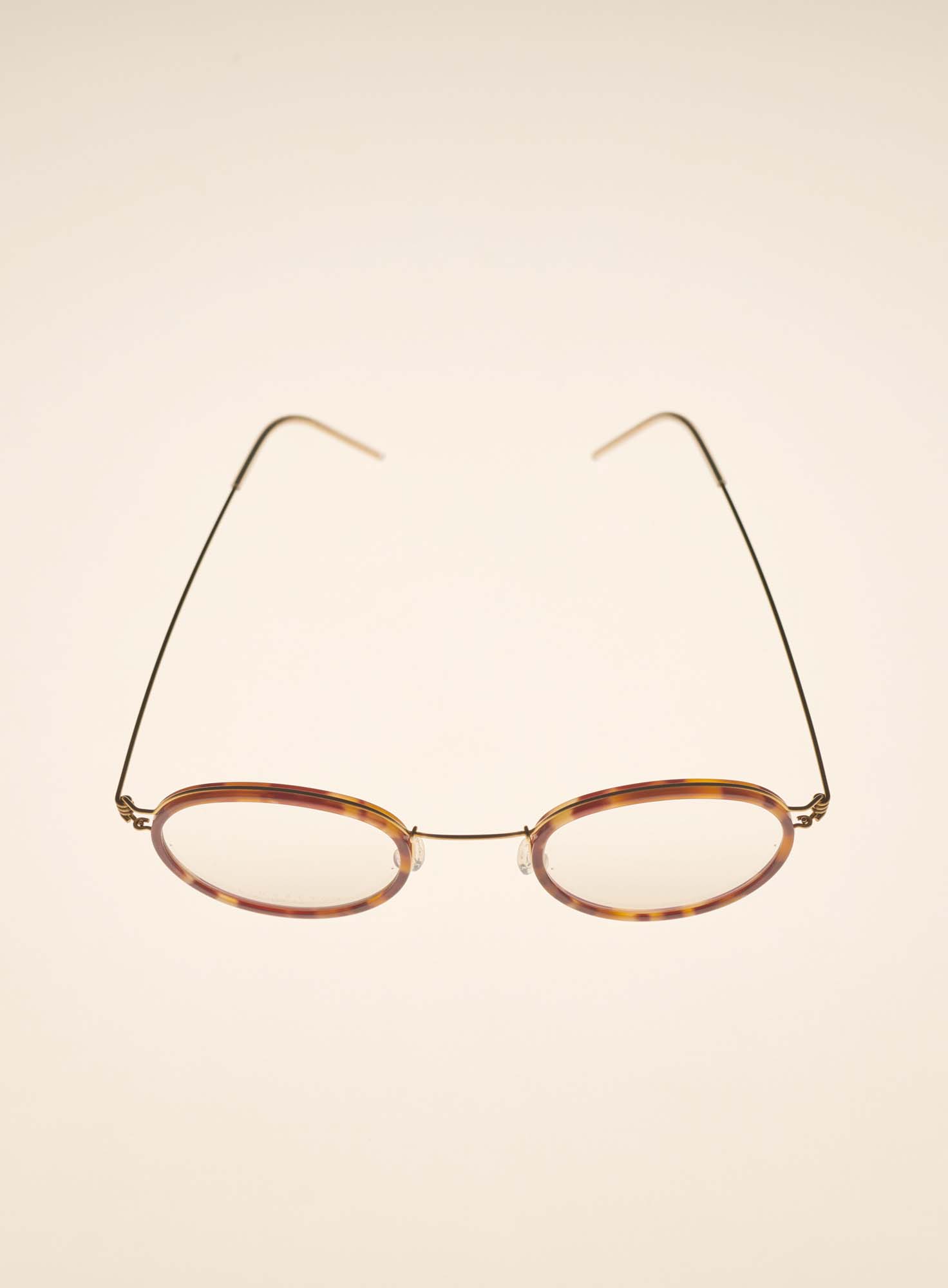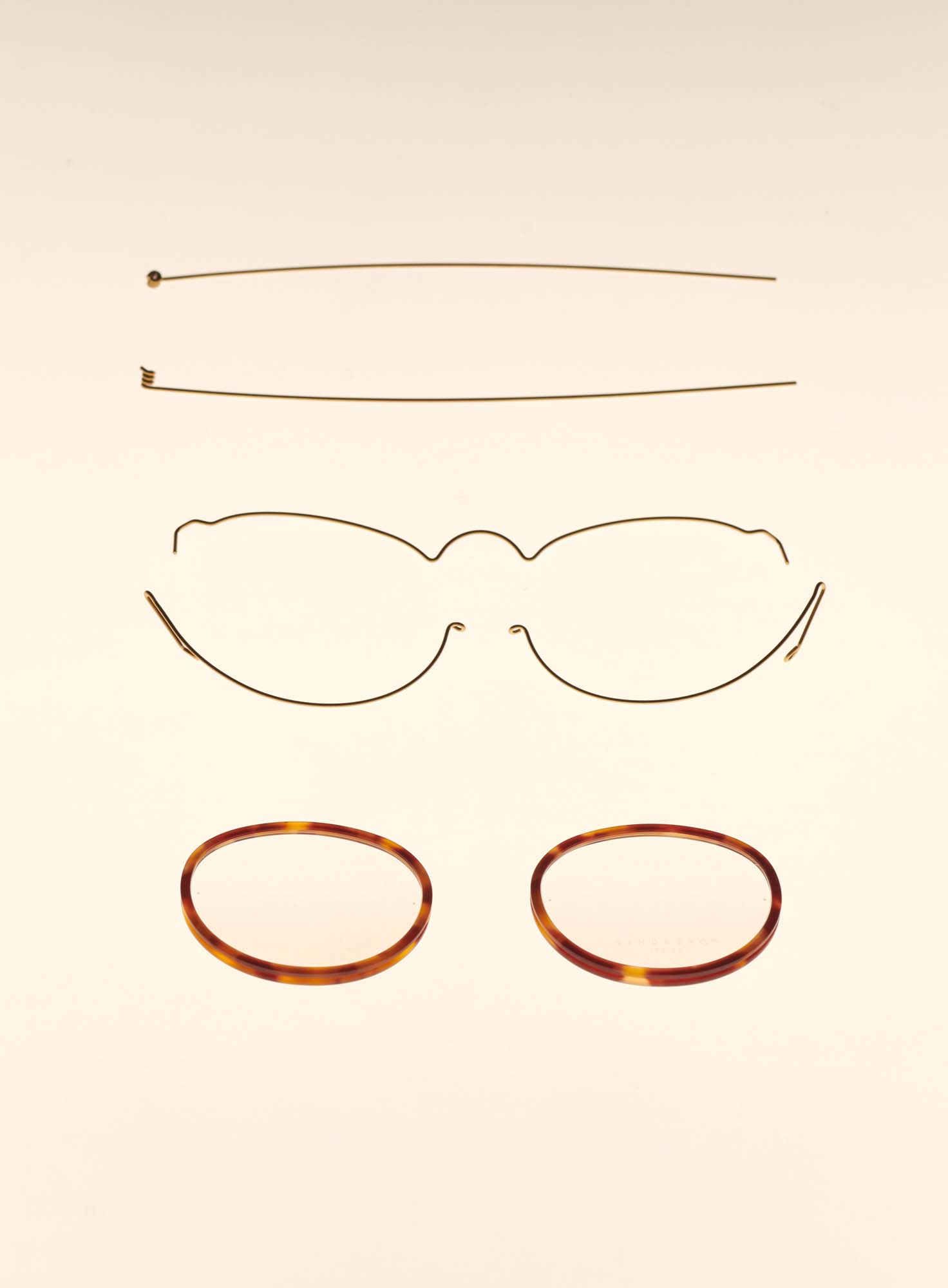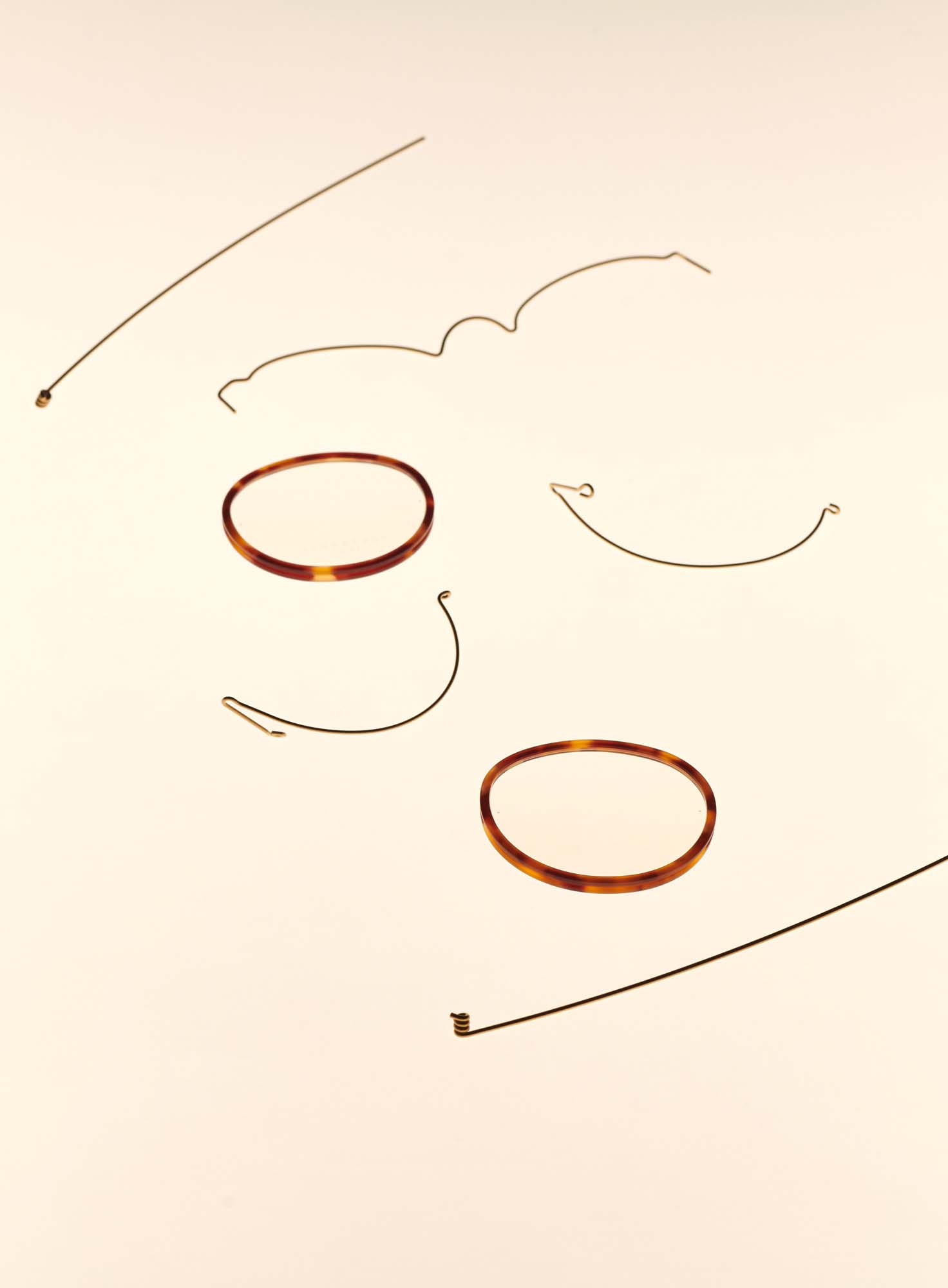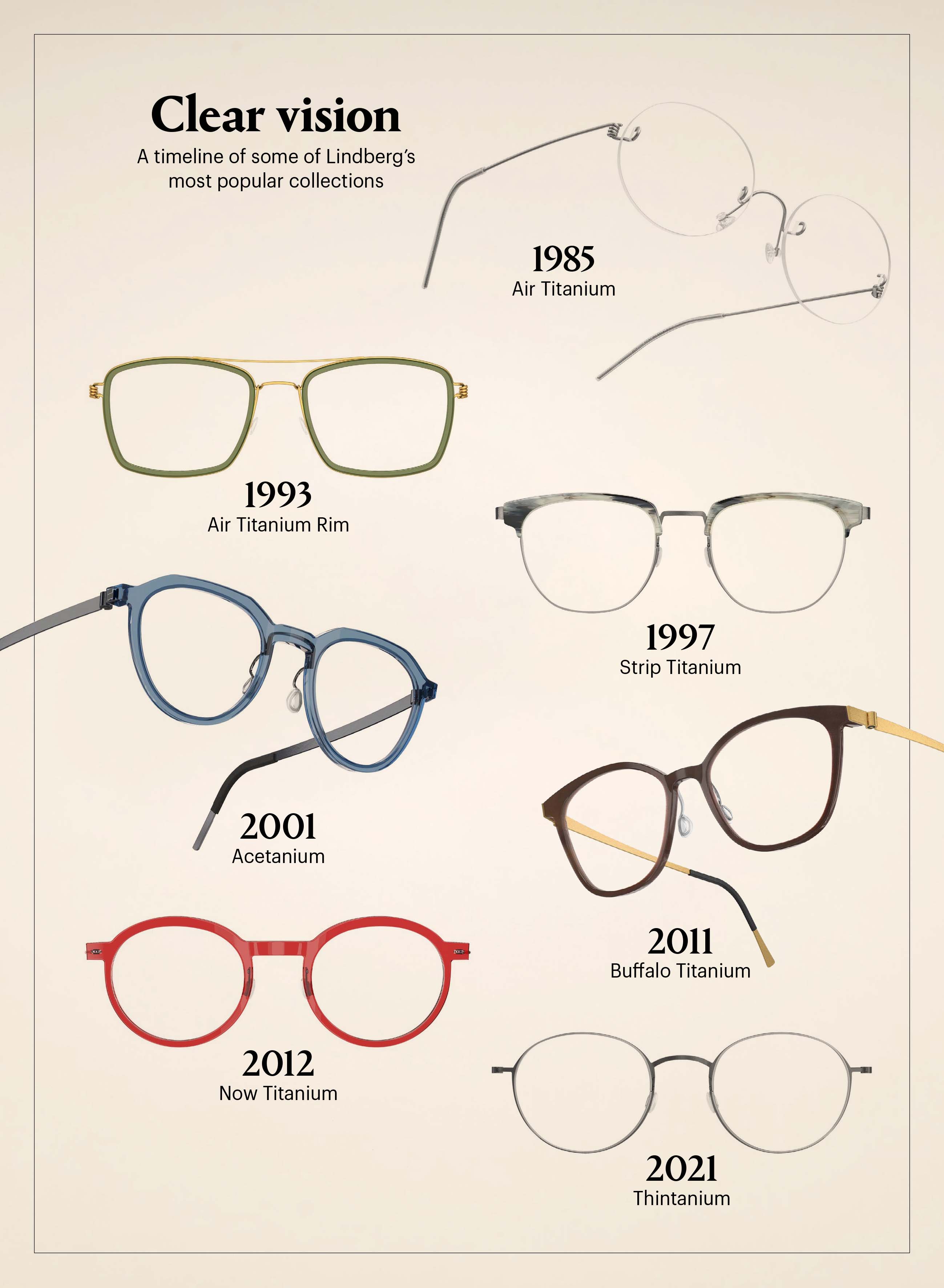The timeless design behind Lindberg eyewear
Screwless and svelte, the visionary offerings of Danish eyewear brand Lindberg combine form and function to future-proof it for years to come

Though Lindberg was founded only 37 years ago, the Aarhus-based eyewear powerhouse has an aura more in common with the generations-old furniture labels that are so integral to our understanding of Danishness. Like many of their timeless designs, the original Lindberg frames were born out of necessity. In the mid-1980s, frustrated by traditional eyewear, involving screws that had to be tightened sooner or later, optician Poul-Jørn Lindberg worked with Copenhagen-based architects Dissing + Weitling to come up with a new design that would require no such maintenance. The solution came in the form of a screwless spiral hinge, which remains a cornerstone of Lindberg today.

‘Rim Lex’ frames in titanium and acetate, part of the Acetanium collection, by Lindberg.
‘Screwless eyewear is durable while providing flexibility. It’s truly unique, and the reason for Lindberg’s existence’, says Roberto Vedovotto, president and CEO of Kering Eyewear, when we speak over the phone in January. (Vedovotto’s company, which designs, develops and distributes eyewear for the likes of Gucci, Cartier, Saint Laurent and Bottega Veneta, acquired Lindberg in September 2021.) The formerly family-owned brand has quickly become the crown jewel in the eyewear behemoth’s portfolio.
Another hallmark of the brand is its pioneering use of titanium, a material more often associated with the fields of aerospace, architecture and healthcare. At the time of Lindberg’s founding, the material had just been released for commercial use. Recognising titanium’s excellent corrosion resistance, exceptional strength (it is three times stronger than stainless steel, while being 40 per cent lighter), and hypoallergenic properties, the brand used titanium for its first product, a rimless design that exists today as the Air Titanium collection. Beyond its elegant appearance, a pair of Air Titanium glasses weighs as little as 2.7g, which ensures comfort over long periods of wear. ‘It’s an ingenious use of the strength, flexibility and durability of titanium,’ says Vedovotto.
Lindberg’s most popular collection, Air Titanium Rim sees the addition of a minimalist rim to the original Air Titanium design while retaining the original spiral hinge. The Thintanium collection takes the brand’s less-is-more philosophy a step further: not only are the titanium strips thinner than before, the rims are embedded in the groove of the lenses, so the glasses are essentially rimless in appearance. ‘The collection forced us to seek new technologies as cutting the ultra-thin design from sheets of titanium challenged what was technically possible,’ recalls Vedovotto. ‘We ended up developing state-of-the-art laser cutters that would create a sharp finish, leaving the material level and with a very polished expression.’

Having developed industry-leading ways to shape and finish titanium, Lindberg uses the material in every piece of eyewear, to ‘ensure the characteristic of lightness and a minimalist approach,’ says Vedovotto. And to cater to a wide range of customer preferences, the brand sometimes pairs titanium temples with fronts in other materials such as acetate, or buffalo horn (Lindberg won a Wallpaper* Design Award in 2015 for its use of the material, see W*191). In the case of wood, the Træ + Buffalo collection offers a choice of olive, padauk and smoked oak, while a special-edition collection, now sold out, offered a front crafted from a 6,000-year-old piece of bog oak found on the Danish island of Møn, with a distinctive dark hue that reflects its unique history. For those who seek a different kind of luxury, the Precious collection uses solid gold and platinum.
One can even inset diamonds in the temple. Vedovotto says of the wealth of options, ‘Eyewear has an enormous influence on how a person is perceived. It goes on your face and everybody sees it. It’s therefore important to understand how shapes and sizing can help you create the fashion you prefer.’
Lindberg offers ten collections, and grows its assortment by 50-60 new products twice a year (all products carry over season to season, year to year). In addition, its modular building system, rolled out in 2018, allows a customer to personalise every element of their eyewear, from colour, size and temple length to nose pads, so that ‘each customer’s final product is uniquely their own’.
Wallpaper* Newsletter
Receive our daily digest of inspiration, escapism and design stories from around the world direct to your inbox.
Technological innovations have been critical to offering a high level of personalisation: rather than applying a coating to its titanium frames, Lindberg employs an exclusive method of colouring the material through oxidation with water and electricity. ‘This can naturally change the colour of titanium eyewear to any in the spectrum of the rainbow,’ says Vedovotto.
The list of Lindberg wearers is illustrious, including names such as Miuccia Prada, Giorgio Armani, Brad Pitt, Queen Margrethe II of Denmark, and former French president François Hollande (whose preference for the Danish brand’s frames drew the ire of the French eyewear industry). Its clients are remarkably loyal: Vedovotto points out that 50 per cent of Lindberg eyewear is sold to existing customers, and ‘we receive messages daily from customers who have been wearing Lindberg eyewear for more than 20 years, with no intention whatsoever of changing. Once you’ve tried Lindberg, you don’t go anywhere else.’ Vedovotto has now made it a priority for the brand to push towards a younger demographic.

Kering Eyewear has been on a remarkable trajectory – its revenues surged from €10m in 2015 to €706m in 2021, and the projected revenue for 2022 is due to exceed €1bn (as Wallpaper* went to press, it was closing its books and therefore unable to confirm an exact figure). And while the group does not publish brand-specific revenue figures, it’s evident that Lindberg is on the up, too. The Danish brand expanded its staff (particularly its customer service and production teams) by 60 in 2022 alone; the total number of employees now stands at 800. The average tenure of production workers at Lindberg’s HQ is 15 years, with some having worked there for more than 25 years. As Lindberg grows, it will have to complement these older hands with fresh talent, trained in-house over six to 12 months. Many of them will be in their mid-20s. ‘We pride ourselves on making the training process interesting and enjoyable, particularly for the younger generation,’ says Vedovotto.
Confident in Lindberg’s performance, Vedovotto has no intention of changing a winning formula. Despite Kering Eyewear being based in Padua, Italy, Lindberg’s products will continue to be designed and manufactured in Denmark. That way, he says, ‘Lindberg has full control over the consistency of our products. It’s a way for us to ensure that we stay true to our globally recognised brand DNA.’
While Vedovotto is keen on tapping into new markets, he remains committed to Lindberg’s 100 per cent wholesale strategy, collaborating with its 6,500 retail partners worldwide (mostly high-end independent opticians), rather than developing its own stores. And beyond financial motivations, there is a democratic ethos behind his intent to bring the brand to a wider audience. As he sums up, ‘everyone who wants to have Lindberg deserves to have Lindberg.’ §
A version of this story appears in the March 2023 Style Issue of Wallpaper* , available now in print, on the Wallpaper* app on Apple iOS, and to subscribers of Apple News +. Subscribe to Wallpaper* today
TF Chan is a former editor of Wallpaper* (2020-23), where he was responsible for the monthly print magazine, planning, commissioning, editing and writing long-lead content across all pillars. He also played a leading role in multi-channel editorial franchises, such as Wallpaper’s annual Design Awards, Guest Editor takeovers and Next Generation series. He aims to create world-class, visually-driven content while championing diversity, international representation and social impact. TF joined Wallpaper* as an intern in January 2013, and served as its commissioning editor from 2017-20, winning a 30 under 30 New Talent Award from the Professional Publishers’ Association. Born and raised in Hong Kong, he holds an undergraduate degree in history from Princeton University.
-
 Marylebone restaurant Nina turns up the volume on Italian dining
Marylebone restaurant Nina turns up the volume on Italian diningAt Nina, don’t expect a view of the Amalfi Coast. Do expect pasta, leopard print and industrial chic
By Sofia de la Cruz
-
 Tour the wonderful homes of ‘Casa Mexicana’, an ode to residential architecture in Mexico
Tour the wonderful homes of ‘Casa Mexicana’, an ode to residential architecture in Mexico‘Casa Mexicana’ is a new book celebrating the country’s residential architecture, highlighting its influence across the world
By Ellie Stathaki
-
 Jonathan Anderson is heading to Dior Men
Jonathan Anderson is heading to Dior MenAfter months of speculation, it has been confirmed this morning that Jonathan Anderson, who left Loewe earlier this year, is the successor to Kim Jones at Dior Men
By Jack Moss